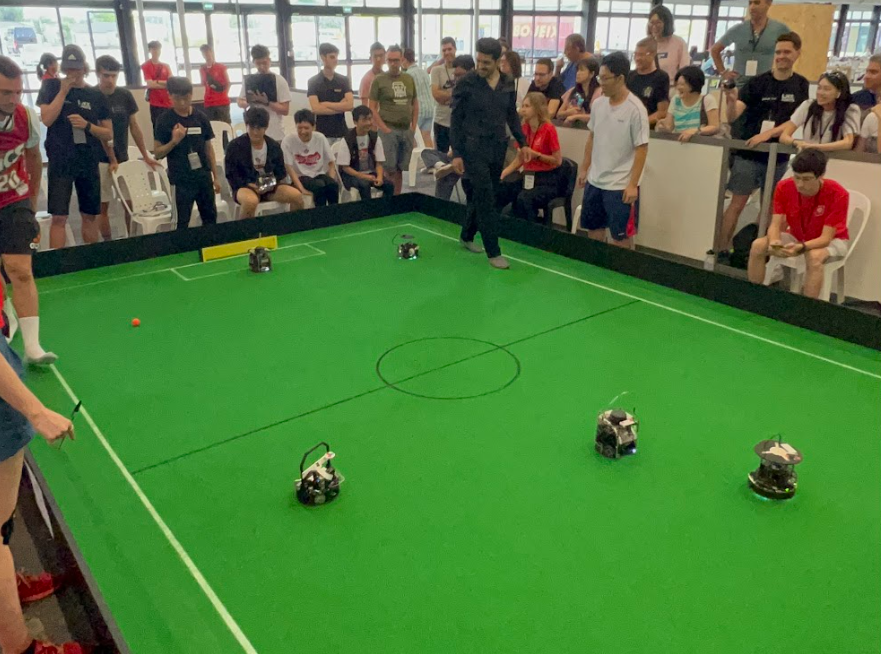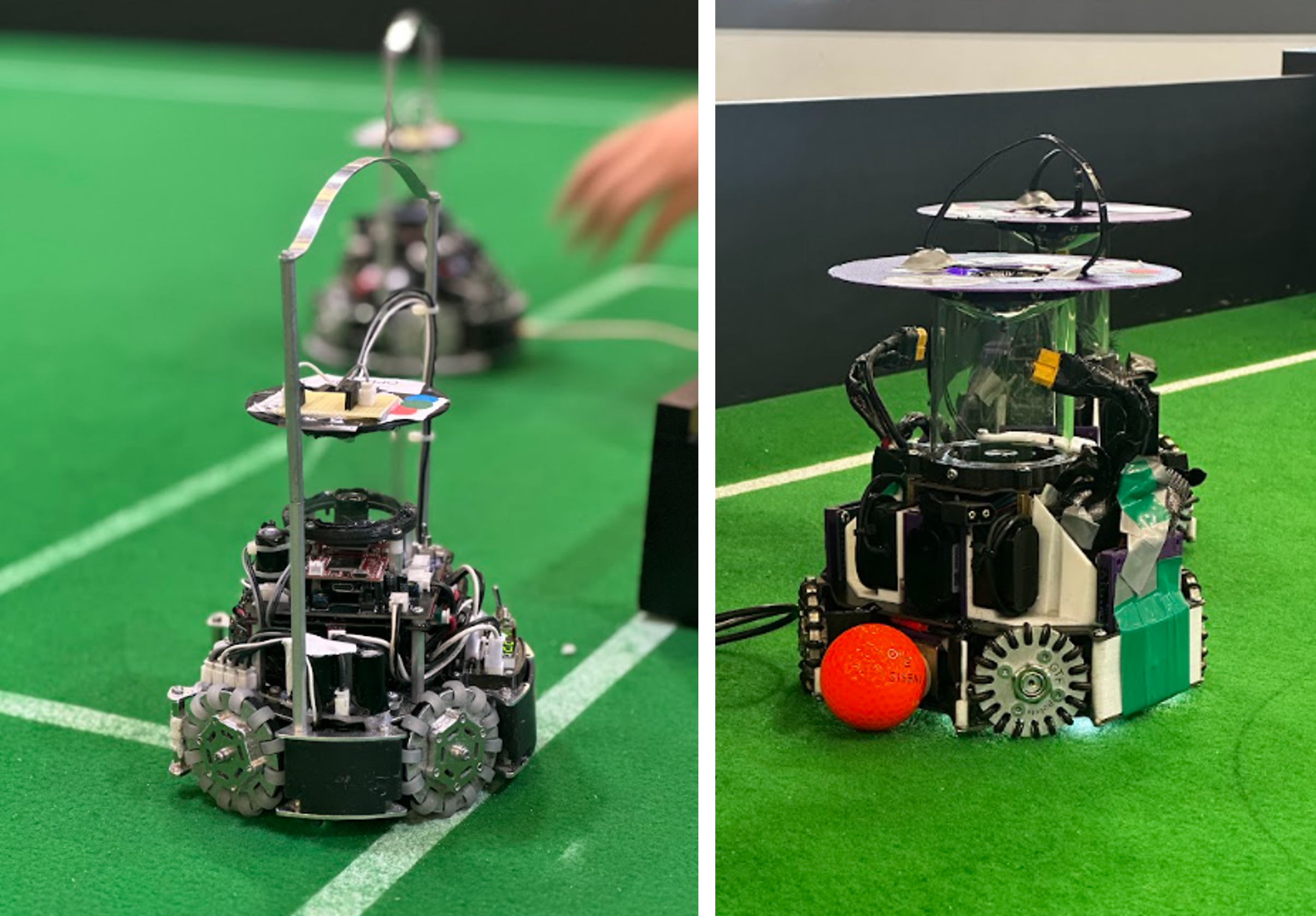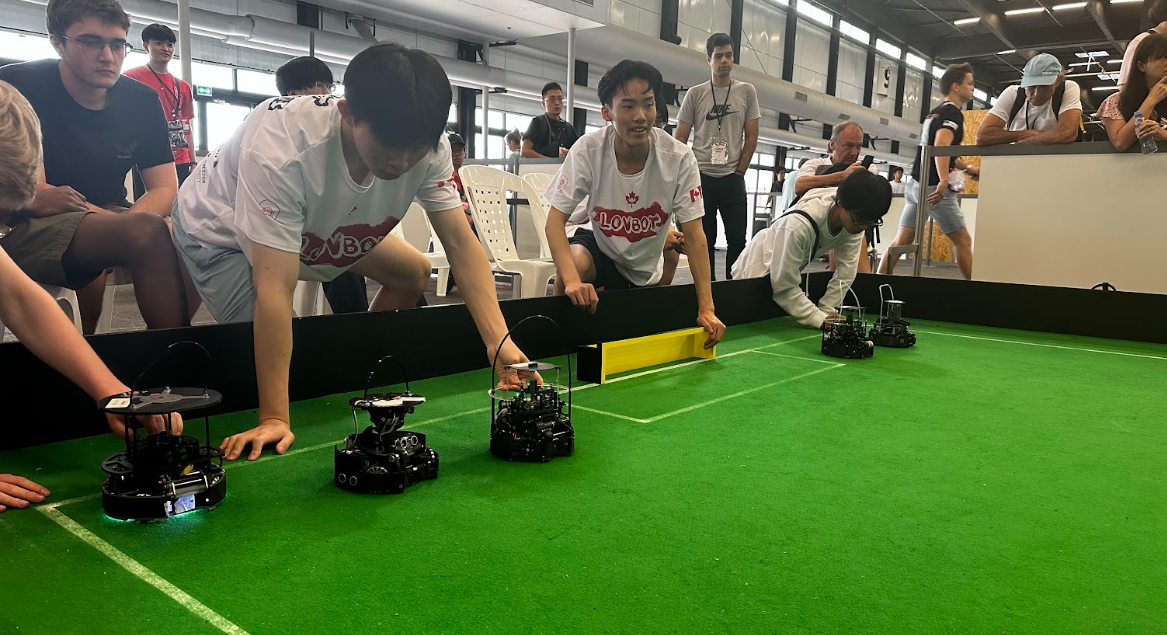
In July this yr, 2500 members congregated in Bordeaux for RoboCup2023. The competitors includes various leagues, and amongst them is RoboCupJunior, which is designed to introduce RoboCup to highschool kids, with the main target being on training. There are three sub-leagues: Soccer, Rescue and OnStage.
Marek Šuppa serves on the Government Committee for RoboCupJunior, and he informed us in regards to the competitors this yr and the newest developments within the Soccer league.
What’s your function in RoboCupJunior and the way lengthy have you ever been concerned with this league?
I began with RoboCupJunior fairly some time in the past: my first worldwide competitors was in 2009 in Graz, the place I used to be fortunate sufficient to compete in Soccer for the primary time. Our staff didn’t do all that nicely in that occasion however RoboCup made a deep impression and so I stayed round: first as a competitor and later to assist organise the RoboCupJunior Soccer league. Proper now I’m serving as a part of the RoboCupJunior Execs who’re liable for the organisation of RoboCupJunior as an entire.
How was the occasion this yr? What have been a few of the highlights?
I suppose this yr’s theme or slogan, if we have been to provide it one, can be “again to regular”, or one thing like that. Though RoboCup 2022 already passed off in-person in Thailand final yr after two years of a pandemic pause, it was in a moderately restricted capability, as COVID-19 nonetheless affected fairly a couple of areas. It was nice to see that the RoboCup group was capable of persevere and even thrive all through the pandemic, and that RoboCup 2023 was as soon as once more an occasion the place 1000’s of robots and roboticists meet.
It could even be troublesome to do that query justice with out thanking the native French organisers. They have been really able to organise the occasion in 2020 however it received cancelled resulting from COVID-19. However they didn’t quit on the concept and managed to place collectively an superior occasion this yr, for which we’re very grateful.

Turning to RoboCupJunior Soccer particularly, might you speak in regards to the mission of the league and the way you, as organisers, go about realising that mission?
The mission of RoboCupJunior consists of two competing targets: on one hand, it must be a problem that’s approachable, attention-grabbing and related for (principally) highschool college students and on the similar time it must be intently associated to the RoboCup “Main” challenges, that are tackled by college college students and their mentors. We’re therefore constantly making an attempt to each make it extra compelling and charming for the scholars and on the similar time guarantee it’s technical sufficient to assist them develop in the direction of the RoboCup “Main” challenges.
One of many methods we do that’s by introducing what we name “SuperTeam” challenges, through which groups from respective international locations type a so-called “SuperTeam” and compete towards one other “SuperTeam” as if these have been distinct groups. In RoboCupJunior Soccer the “SuperTeams” are composed of 4 to 5 groups and so they compete on a discipline that’s six occasions bigger than the “normal” fields which are used for the person video games. Whereas within the particular person matches every staff can play with two robots at most (leading to a 2v2 sport) in a SuperTeam match every SuperTeam fields 5 robots, that means there are 10 robots that play on the SuperTeam discipline throughout a SuperTeam match. The setup is similar to the Division B of the Small Size League of RoboCup “Main”.
The SuperTeam video games have existed in RoboCupJunior Soccer since 2013, so for fairly some time, and the suggestions we obtained on them was overwhelmingly optimistic: it was a number of enjoyable for each the members in addition to the spectators. However in comparison with the Small Dimension League video games there have been nonetheless two noticeable variations: the robots didn’t have a method of speaking with each other and moreover, the referees didn’t have a method of speaking with the robots. The outcome was that not solely was there little coordination amongst robots of the identical SuperTeam, each time the sport wanted to be stopped, the referees needed to bodily run after the robots on the sector to catch them and do a kickoff after a objective was scored. Though hilarious, it’s removed from how we might think about the SuperTeam video games to look.
The RoboCupJunior Soccer Customary Communication Modules purpose to do each. The module itself is a small system that’s hooked up to every robotic on the SuperTeam discipline. These gadgets are all related through Bluetooth to a single smartphone, by way of which the referee can ship instructions to all robots on the sector. The gadgets themselves additionally help direct message alternate between robots on a single SuperTeam, that means the groups should not have to speculate into determining the right way to talk with the opposite robots however could make use of a standard platform. The gadgets, in addition to their firmware, are open supply, that means not solely that everybody can construct their very own Customary Communication Module in the event that they’d like but in addition that the group can take part in its improvement, which makes it an attention-grabbing addition to RoboCupJunior Soccer.

How did this new module work out within the competitors? Did you see an enchancment in expertise for the groups and organisers?
On this first large public take a look at we targeted on exploring how (and whether or not) these modules can enhance the gameplay – particularly the “chasing robots at kickoff”. Though we’ve carried out “lab experiments” previously and had some empirical proof that it ought to work moderately nicely, this was the primary time we tried it in an actual competitors.
All in all, I’d say that it was a really optimistic experiment. The modules themselves did work fairly nicely and for a few of us, who occurred to have expertise with “robotic chasing” talked about above, it was form of a magical feeling to see the robots cease proper on the primary referee’s whistle.
We additionally came upon potential areas for enchancment sooner or later. The modules themselves should not have an influence supply of their very own and have been powered by the robots themselves. We didn’t assume this could be an issue however within the “actual world” take a look at it transpired that the voltage ranges the robots are able to offering fluctuates considerably – as an illustration when the robotic decides to aggressively speed up – which in flip means a few of the modules disconnect when the voltage is lowered considerably. Nonetheless, it ended up being a pleasant lesson for everybody concerned, one which we are able to definitely be taught from after we design the subsequent iterations.
The livestream from Day 4 of RoboCupJunior Soccer 2023. This stream contains the SuperTeam finals and the technical challenges. It’s also possible to view the livestream of the semifinals and finals from day three here.
Might you inform us in regards to the emergence of deep-learning fashions within the RoboCupJunior leagues?
That is one thing we began to look at in recent times which stunned us organisers, to some extent. In our day-to-day jobs (that’s, when we’re not organising RoboCup), many people, the organisers, work in areas associated to robotics, pc science, and engineering usually – with a few of us additionally doing analysis in synthetic intelligence and machine studying. And whereas we at all times thought that it could be nice to see extra of the cutting-edge analysis being utilized at RoboCupJunior, we at all times dismissed it as one thing too superior and/or troublesome to arrange for the highschool college students that comprise nearly all of RoboCupJunior college students.
Properly, to our nice shock, a few of the extra superior groups have began to utilise strategies and applied sciences which are very near the present state-of-the-art in numerous areas, significantly pc imaginative and prescient and deep studying. A great instance can be object detectors (normally primarily based on the YOLO architecture), which are actually used throughout all three Junior leagues: in OnStage to detect numerous props, robots and people who carry out on the stage collectively, in Rescue to detect the victims the robots are rescuing and in Soccer to detect the ball, the targets, and the opponents. And whereas the members typically used an off-the-shelf implementations, they nonetheless wanted to do all of the steps vital for a profitable deployment of this know-how: collect a dataset, finetune the deep-learning mannequin and deploy it on their robots – all of which is way from trivial and may be very near how these applied sciences get utilized in each analysis and trade.
Though we now have seen solely the extra superior groups use deep-learning fashions at RoboCupJunior, we count on that sooner or later we’ll see it grow to be far more prevalent, particularly because the know-how and the tooling round it turns into extra mature and strong. It does present, nonetheless, that regardless of their age, the RoboCupJunior college students are very near cutting-edge analysis and state-of-the-art applied sciences.

How can individuals become involved in RCJ (both as a participant or an organiser?)
An excellent query!
The most effective place to begin can be the RoboCupJunior website the place one can discover many attention-grabbing particulars about RoboCupJunior, the respective leagues (equivalent to Soccer, Rescue and OnStage), and the related regional representatives who organise regional occasions. Getting in contact with a regional consultant is by far the best method of getting began with RoboCup Junior.
Moreover, I can definitely suggest the RoboCupJunior forum, the place many RoboCupJunior members, previous and current, in addition to the organisers, talk about many associated subjects within the open. The group may be very newbie pleasant, so if RoboCupJunior sounds attention-grabbing, don’t hesitate to cease by and say hello!
About Marek Šuppa
 | Marek stumbled upon AI as a young person when constructing soccer-playing robots and rapidly realised he isn’t sensible sufficient to do all of the programming by himself. Since then, he’s been determining methods to make machines be taught by themselves, significantly from textual content and pictures. He at present serves because the Principal Information Scientist at Slido (a part of Cisco), bettering the way in which conferences are run world wide. Staying true to his roots, he tries to offer others with an opportunity to have an analogous expertise by organising the RoboCupJunior competitors as a part of the Government Committee. |
AIhub
is a non-profit devoted to connecting the AI group to the general public by offering free, high-quality data in AI.
AIhub
is a non-profit devoted to connecting the AI group to the general public by offering free, high-quality data in AI.
Lucy Smith
is Managing Editor for AIhub.
Source link
#Interview #Marek #Šuppa #insights #RoboCupJunior
Unlock the potential of cutting-edge AI options with our complete choices. As a number one supplier within the AI panorama, we harness the ability of synthetic intelligence to revolutionize industries. From machine studying and information analytics to pure language processing and pc imaginative and prescient, our AI options are designed to boost effectivity and drive innovation. Discover the limitless potentialities of AI-driven insights and automation that propel your enterprise ahead. With a dedication to staying on the forefront of the quickly evolving AI market, we ship tailor-made options that meet your particular wants. Be a part of us on the forefront of technological development, and let AI redefine the way in which you use and reach a aggressive panorama. Embrace the longer term with AI excellence, the place potentialities are limitless, and competitors is surpassed.











